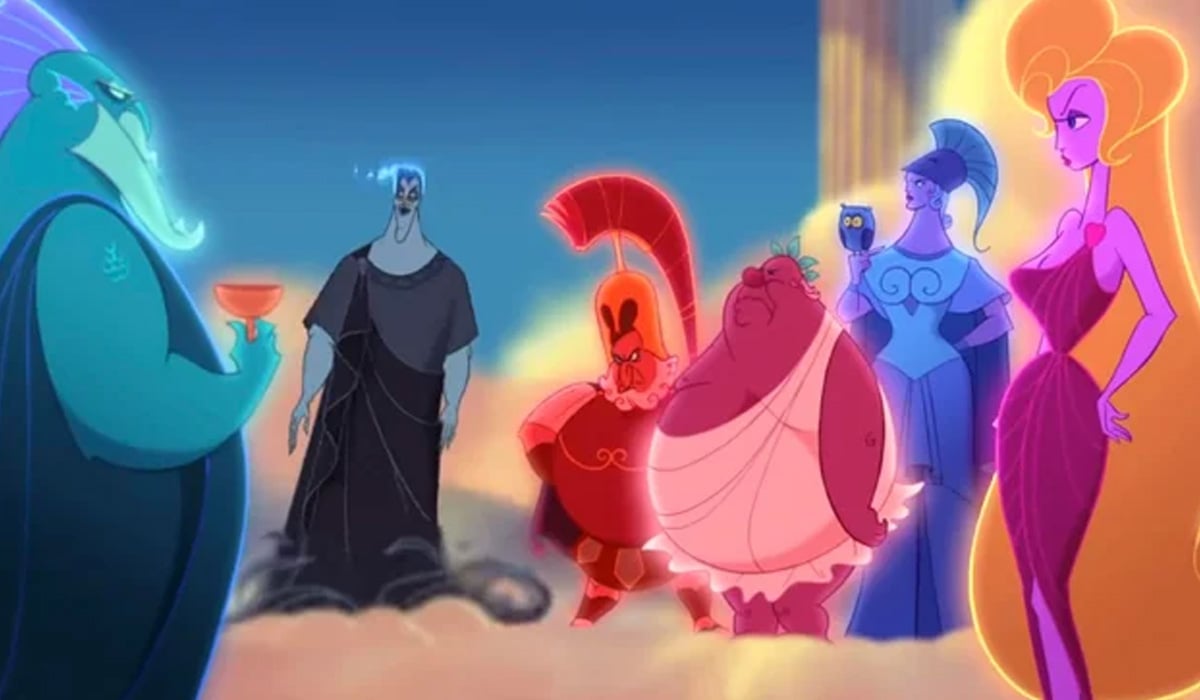There are few characters as popular as the ones created by our ancestors for the Greek Pantheon. The gods and goddesses of yore have been entertaining humanity for thousands of years. Not only did they inspire the Romans, but pieces of the Greek mythos were lifted for Christianity, Norse mythology, and so much modern literature it would take a lifetime to read it all.
While we are all keenly aware of Zeus, Hera, and Aphrodite, there is one Greek god that remains the king — of the underworld at least. Hades, the lord of the dead has been depicted as evil, misunderstood, and in some cases, a drop-dead sexpot. Over the centuries, some inspiring stories have been translated about the Unseen One, and we’ve collected only the best facts from across the web.
The 10 best pieces of Hades trivia for any Greek Mythology nerd
10. Hades isn’t evil
Most lovers of Greek mythology know this one off the cuff, but it’s important to lay down the ground rule that Hades was one of the most peaceful and impartial gods. As the Lord of the Underworld, it was all men’s fate to meet Hades, and the idea of death is scary for most sentient beings.
The only reason Hades is excluded from the title of Olympian, is simply that his brothers relegated him to the Underworld, rather than the glistening mountain of Olympus.
9. Hades didn’t hate his siblings
Some sources debate whether Hades was salty about the assignment, but if he was, he never made a move against his siblings. In some versions, the assignments were decided by chance. The Greeks were big on fate, so it’s unlikely that Hades would have felt any ill will.
8. Hades didn’t really hate anyone

Out of the major Greek gods, Hades has the least number of shrines, statues, and even residual art like amphoras (pottery). Even uttering his name was thought to bring bad luck. There was one significant cult in Thesprotia devoted to him, but unlike other gods and goddesses (we’re looking at you, Aphrodite) Hades never retaliated for his lack of devotion.
That might have been because he had to deal with the fallout of any massacres, but still, he managed to keep his temper in check.
7. Hades let very few people escape
Being the judge of the dead is no easy job. The dead lament their passing almost as much as those they leave behind, and Greek mythology sees more than one would-be hero try to convince Hades to let their loved ones go. Less than 10 Grecians ever attempted to outmaneuver the Lord of the Dead. Psyche, Orpheus, Sisyphus, Herakles, Theseus, and Alestis all managed to leave the Underworld after their deaths, but since everyone dies eventually, did they truly escape?
6. Hades of the iron heart
With so many people desperate to save their loved ones, Hades had to shut himself down emotionally. His heart was said to be made from iron so that he might never waver in his conviction as Lord of the Dead — but even the toughest people cry.
When Orpheus traveled into the Underworld to rescue his true love, Eurydice, the musician’s love for her was overwhelming. Orpheus’s ballad for his dead love “Drew iron tears to Pluto’s cheek/ and made Hell grant what Love did seek.”
Hades did let Euridice leave, but Orpheus blew it.
5. Hades is a one-woman kind of man

The affairs that Zeus and Posideon had with any woman who dared look sideways at them are legendary. They sparked controversy with their wives, humans, and nymphs for their infidelity and got into some pretty freaky shenanigans. When the bar is literally in the Underworld, it’s not hard to beat and Hades was a champion husband by comparison.
Hades did have lovers before he married Persephone, but stories indicate that he was with each of his consorts at different times. When his first love, Leuce the ocean nymph, died after a life lived with him in the Underworld, Hades turned her into the poplar tree (now a sacred symbol). When Persephone came around, Hades broke things off with his lover Minthe and devoted himself to his new wife. Minthe kept sniffing around, however, and Persephone eventually turned her into a mint plant to end the relationship for good.
4. He might have tricked his wife into living with him
Despite her eventual love for him, Hades first encounter with Persephone wasn’t exactly copacetic. Persephone — the daughter Zeus and Demeter, the goddess of the harvest — was a real beauty. She caught Hades’ eye while picking flowers one day, and he sucked her into the Underworld.
Hades’s loneliness paired with his kindness got the better of Persephone, and she eventually came around to her kidnapping, but her mother was distraught and refused to let anything grow while her daughter was gone. Relenting, Hades agreed to release Persephone. It was well known that if anything from the Underworld was consumed, one would have to stay there forever, but before she left Persephone ate six pomegranate seeds.
There are versions of this myth that claim that Persephone was an unwilling hostage, or that she ate them on purpose, but you don’t go turning exes into mint plants unless you really like a guy.
3. He’s got a heckin’ great doggo

Everyone knows about Cerberus. The multi-headed-hound is always by his master’s side, though his appearance varies wildly. While he might be known as a three-headed-dog now, he is traditionally depicted as a dog with two heads in frescos and amphoras, and there are dozens of theories on how he looked.
A Byzantine poet claimed that Cerberus had 50 heads — only three of which were dogs! Hesiod imagined a beast with one dog head and 100 snake heads (do they have necks? How much of a snake is considered neck?).
The snakey aspect of Cerberus can be traced back to both parents and gives the hound the ability to inject venom into his prey. But despite his, by all accounts terrifying composition, Cerberus was still a very good boy. The etymology of his name is contested, but one theory says it’s similar to the Proto-European word, Kerberos, meaning spotted.
That’s right, there is a chance that Hades is so basic, he named his dog Spot.
2. You wont like Hades when he’s angry
Despite his cold demeanor, Hades has lost his cool once or twice. When Pirithous, a friend of Theseus, broke into the Underworld in an attempt to steal Persephone as a wife, Hades merrily accepted Pirithous’s demand. He asked Pirithous and Theseus to take a seat and wait while he gathered his wife, but the bench grew around them, preventing the men from rising.
There’s no telling how long they sat before Herakles arrived and saved Theseus. Doing so was a great challenge, and legend has it that Theseus left most of his rear end behind when Herakles pulled him up and left him, “with hinder parts rubbed smooth.” Hades refused to release Pirithous, and eventually fed him to Cerberus.
1. He never had any children
It might not seem like much, but it was a huge accomplishment for a Greek god not to procreate. Hades was one of the rare few to never sire any children. One theory behind his child-free attitude says that the Underworld is inherently unable to create life, and since Hades never left, he literally didn’t have the chance.
When Orphism came along it was suggested that that the Erinyes, also known as the Furies, were his daughters alongside Melione and Zagreus. But classic Greek mythology just wants to make you cringe. The children that came to Persephone and Hades were actually fathered by his brother (and her dad) Zeus.
With brothers like these, who needs enemies?

